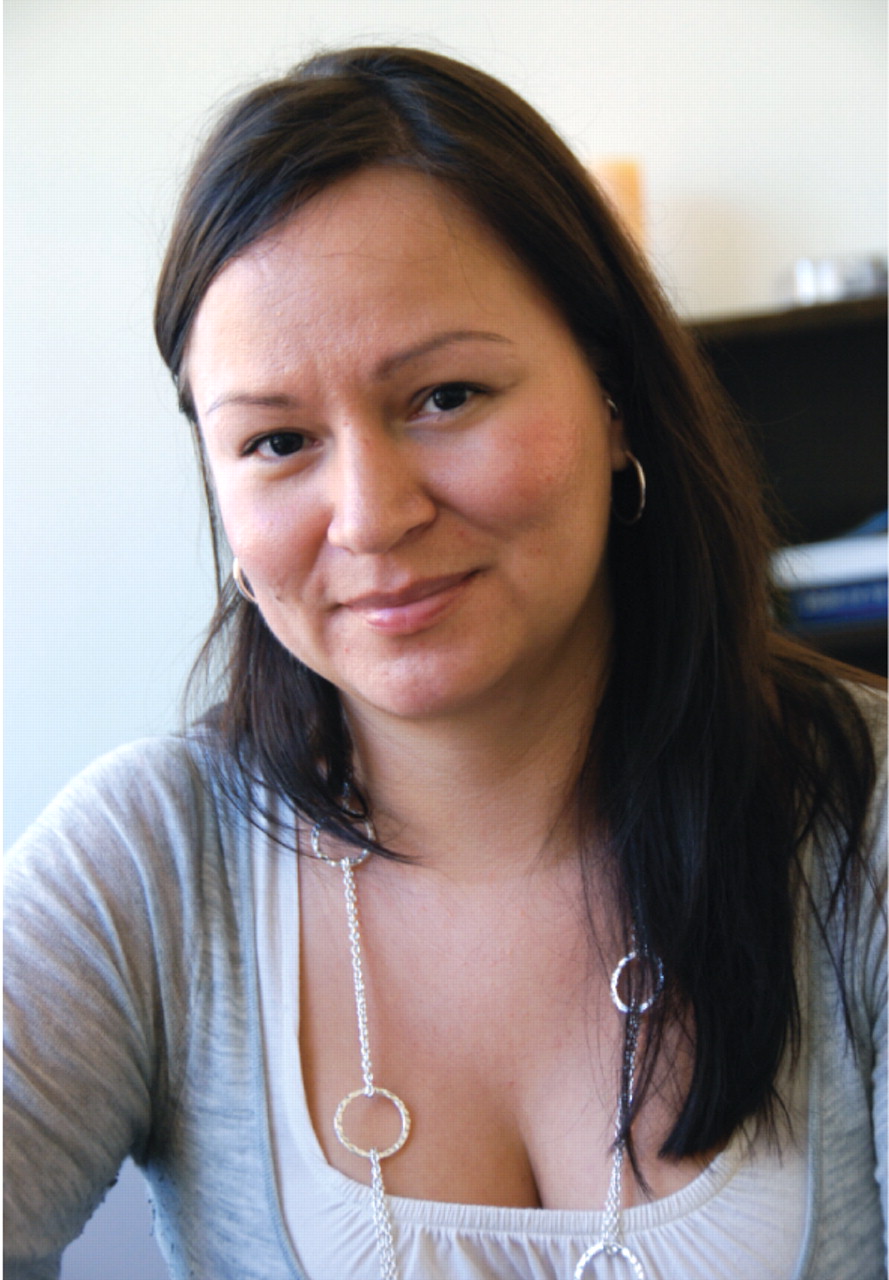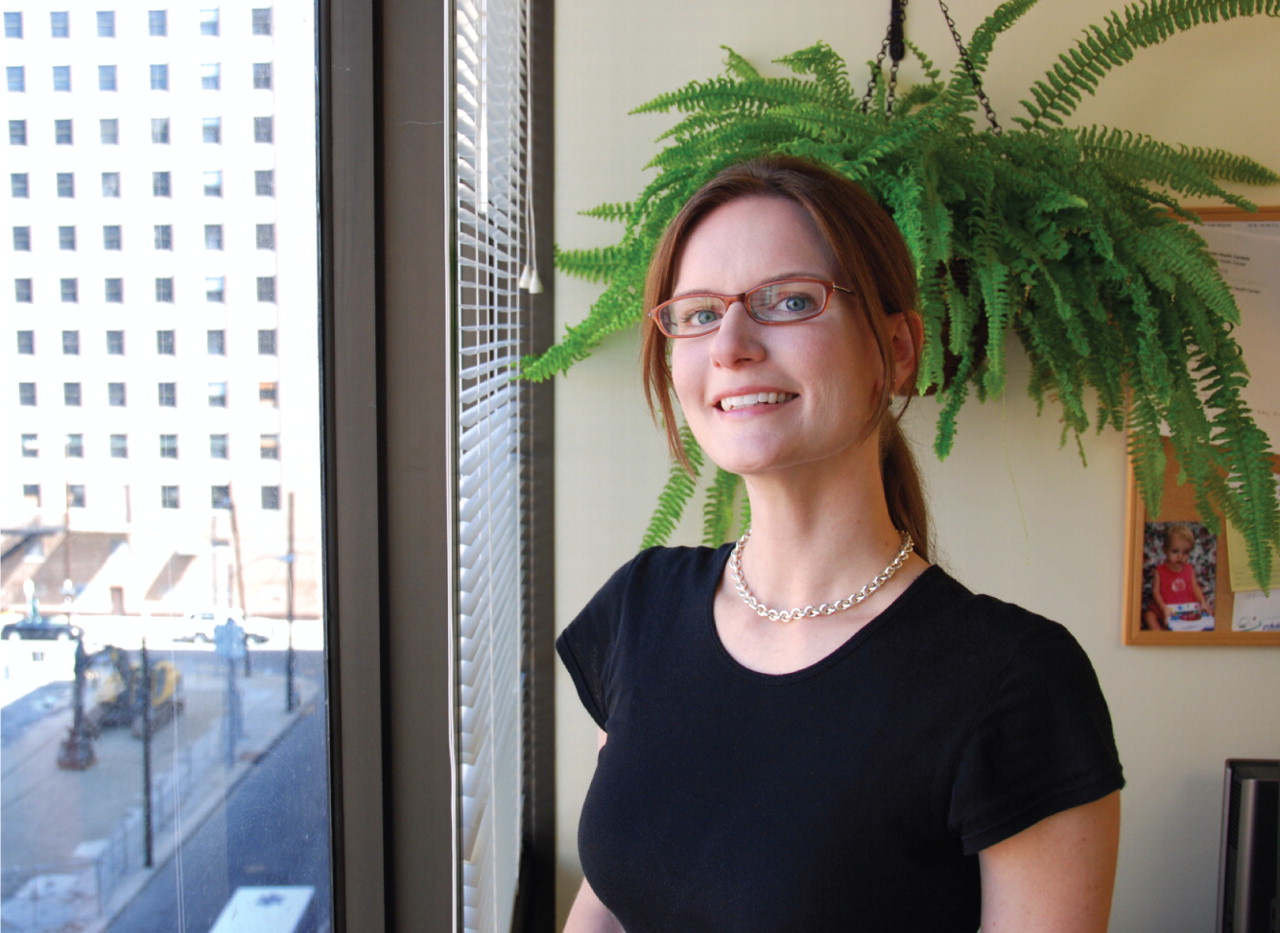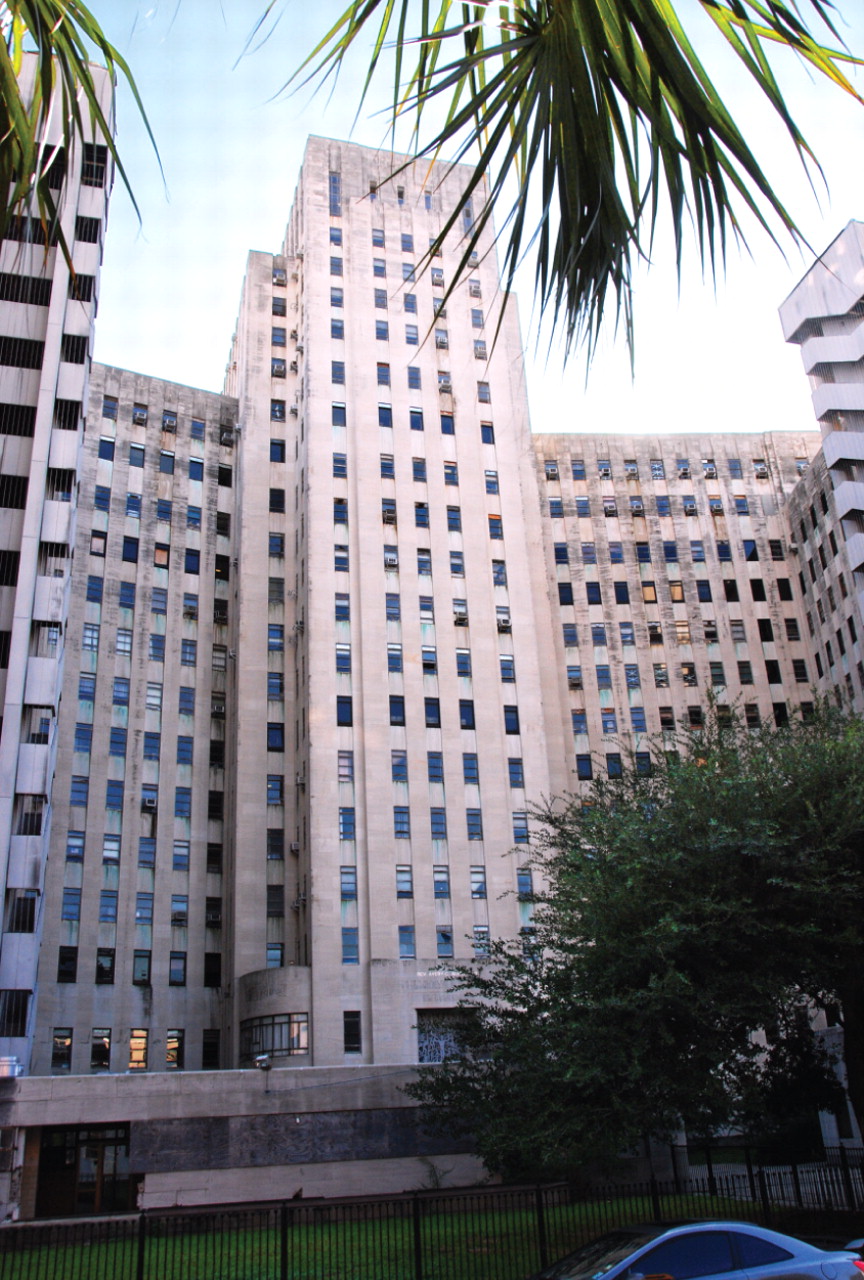Residents Overcome Obstacles to Training in New Orleans
Derelict and silent, the Art Deco hulk of Charity Hospital looms above downtown New Orleans. “The lights are on, but nobody's home,” said Manon Mashburn, M.D., chief resident in adult psychiatry at Tulane University School of Medicine.

Manon Mashburn, M.D. (right), grew up on the Osage Indian Reservation in Fairmont, Okla., but study at James Cook University in Australia led her to the School of Tropical Medicine at Tulane and then to its medical school. She will concentrate in consultation/liaison psychiatry after completing residency this year at Tulane.
Credit: Aaron Levin
She's speaking both literally and metaphorically, like the building that is both the reality and the symbol of a precarious city's fall at the hands of Hurricane Katrina. The occasional fluorescent tube glows through some unshaded window, but Charity, once a center of medical training and a beacon for public health care in the city, is closed, possibly forever.
For a young doctor, a hurricane that drowns your hospital, kills your fellow citizens, and drives away many of your neighbors, patients, and colleagues may not seem the most auspicious fulcrum for your residency years. Despite the hardships rendered by Katrina—or maybe because of them—psychiatry residents from Louisiana State University (LSU) Health Sciences Center School of Medicine and Tulane who spoke to Psychiatric News now see how this extraordinary experience added an unexpected depth to their training and their lives.
Charity Hospital still lies at the core of that experience, part of their commitment to the city.
“In medical school, I wound up working on Charity's third floor and loved it, so I went into psychiatry,” said Mashburn.
Charity's third floor—the psychiatric ward—was a legend around the city, explained her colleague Cynthia Fields, M.D., a fourth-year resident.

Cynthia Fields, M.D., will pursue a fellowship in geriatric psychiatry at Johns Hopkins, fortified by her postgraduate years in New Orleans in the aftermath of Hurricane Katrina.
Credit: Aaron Levin
“Charity Hospital is really why we came here,” she said.“ It was packed to the gills with 120 psychiatric patients. You'd do a history, and you wouldn't ask if there was depression in the family; you'd say, 'Was anybody ever on the third floor?' ”
As Katrina approached in late August 2005, the residents scattered.
LSU's chief child psychiatry resident, Lakisha Williams, M.D., a native of Greenwood, Miss., remembers talking with other staffers in the crisis-intervention unit about the impending storm.
“I gassed up, packed up, and left at 2 p.m. for Memphis,” she said.
“I grew up in Florida, and I usually stay for hurricanes,” said Pavan Pancholy, M.D., the other co-chief resident at LSU. “There's no traffic!” But this time, he left too.
Nicholas Pejic, M.D., now co-chief resident at LSU, was in Chicago when Katrina arrived and thought—briefly—about staying there.
Fields headed for Baton Rouge. Mashburn went to Shreveport. “Katrina hit the next day, on my 30th birthday,” she said. “All that 'worried-about-my-30th-birthday' stuff went by the boards. I spent days and days watching CNN. Then, after a couple of days, I just turned off the TV.”
New Places, New Experiences
The two medical schools—and their residents—traveled different paths to recovery after the hurricane. Facilities and administrative systems at both schools were badly damaged by floodwaters and the aftereffects of a lack of electricity. Tulane relocated to Houston, temporarily embedding itself into Baylor University's facilities. Most classes and graduate medical education were restarted there on October 1, 2005.
LSU also worked hard to get back on its feet. Preclinical classes began at the Pennington Biomedical Research Center near the university's main campus in Baton Rouge. Graduate medical education was parceled out to Louisiana's public hospitals and, increasingly, to private facilities as programs returned to New Orleans. Six residency programs at Tulane and 15 at LSU were closed after the storm.
Both systems had largely returned to New Orleans in time for the 2006-07 academic year. Undergraduate medical enrollment was about equal to the last pre-Katrina year (2004-05), but Tulane had 200 fewer residents and LSU 157 fewer than before. Both schools also lost faculty to a combination of retirement, voluntary departures, and involuntary layoffs.
Learning Personal, Professional Lessons
After he evacuated, LSU's Pancholy worked in a shelter and saw many of his patients from Charity, trying hard to recall what medications he had prescribed before the storm. Treating his shelter patients for depression or anxiety disorders on top of their pre-existing disorders, he bore a double burden.

Charity Hospital, now closed, was the heart of New Orleans' system of public medical care since its opening in 1939.
Credit: Aaron Levin
“I felt guilty,” he said. “I was lucky to have a job, an apartment, and a car, while they had lost everything.”
Pejic returned to work at the private Ochsner Clinic, which was spared by the storm. Nothing was easy in the Big Easy.
“I saw how vulnerable the houses had been, and it made me feel more vulnerable and closer to our patients,” he said. “I felt like a patient for a time, but I relied on my love for New Orleans to pull me through.”
Not everyone could return immediately.
Fields started working at Jackson State Hospital near Baton Rouge on the women's unit housing chronic, violent patients. She did not waste this unexpected sojourn in a forensic hospital.
“I learned that some people, despite all our best efforts and with total compliance with their meds, cannot get well,” she said.
Williams returned as far as Baton Rouge at the end of September and went to work treating storm evacuees at the Margaret Dumas Clinic, run by the Capital Area Human Services District (Psychiatric News, December 21, 2007).
Mashburn came back to New Orleans after two weeks, retrieved some of her belongings, and then returned to Oklahoma to care for her sick grandfather. She spent four weeks at “Tulane-in-exile” in Houston and moved back for good in January 2006. The lack of psychiatric inpatient beds in New Orleans meant she began a reverse commute of more than two hours up to Jackson State Hospital, staying over Tuesday and Wednesday nights. Other residents drove to other state hospitals in Louisiana to find patients and work.
Even when Tulane reopened in February 2006, New Orleans was a ghost town, said Fields.
“I rarely even saw my coworkers, aside from residents' meetings or grand rounds,” she said. “They came back in bits and pieces. It was hard to find M.D.s for supervision because so many had left or relocated. We had extra call, and usually there's no call in PGY-3, and we feared for our safety driving in at night through abandoned or rough neighborhoods.”
The seriously mentally ill people who left the area were replaced by those with newly emerging mental illness. There was more homelessness. Reminders of the storm (or fears of a new one) still trigger anxiety and weeping among patients, or worse.
Besides schizophrenia and bipolar disorders, psychiatrists saw a noticeable rise in substance abuse, said Fields. Relapse is common.
“There was nothing much to do after the storm but drink,” she said. “Bars became the new living rooms.”
New training assignments seemed disconnected at first, but the residents also saw other facilities and learned how they were run. At private River Oaks Hospital, for instance, Fields worked with addiction experts, and Williams trained in child psychiatry.
Some work relationships changed too, as experience was transformed into maturity.
“Residents became more direct,” recalled Pejic. “We could speak openly to attendings.”
Continuity of care is still hard to maintain. The staff stabilizes patients, who then decompensate and come back again because systems to support them outside the hospital are often gone.
“I had a whole network of patients, and now I don't know where they are,” said Fields. “They don't have the day programs or group homes that used to be here.”
Residents and faculty talk mordantly about revising DSM-IV.
“The threshold for depression has risen here,” she said.“ It used to be two weeks. If that was the case, you'd be treating 95 percent of the population. People meet all the criteria, but medication won't help when you're living in a trailer and your mother has died. Is this diagnosable? Or is it a normal and appropriate response? I wonder about our definitions and what we think is pathological.”
More care than usual is given to picking incoming residents now, at least at Tulane, said Fields. “We got applications from people who were clearly not familiar with the realities now of life in this city. In the end, we only considered people with some connection with New Orleans—ones who had lived or gone to school here. It's hard to live here.”
Hard it may be, but the residents have developed some perspective.
“Things don't seem like that big a deal anymore,” said Pancholy. “When I see what others went through—waiting for FEMA, suffering in shelters—I can deal with anything in my career now.”
Mashburn is pursuing consultation/liaison psychiatry, but without Charity Hospital she misses the diversity in diagnoses and the educational value of a larger caseload. She now sees psychiatry in a broader perspective as well.
“Politically, the rest of the world doesn't see mental health as a priority,” she said. “People sit in the ER, waiting for help. There's money somewhere for mental health in New Orleans and Louisiana, but when will they use it to get facilities open?”
Emotions are contained, quite professionally, of course, but they are not far from the surface.
“I was probably depressed, but my word now is 'resilient,' ” said LSU's Williams. “I chose to make this city my own, and I try to pass that on to my patients.”
She has a vision of her own future in her adopted city: “I want to be old at Jazzfest.”
These psychiatry residents have learned how to deal with chaos, adversity, and doubt. They have discovered that patience and humor can help them live when things most people take for granted are gone. They know they are needed and valued, by their patients and by the people who are preparing them for practice.
Around them, New Orleans reconstructs, brick by brick and block by block, mixing success and failure. The patients show up at the clinic door, and the residents plow on, but the city and its trauma never leave.
“When are we going to stop talking?” asked Mashburn.“ We'll talk to our grandchildren about it.”
Articles in Academic Medicine on how Tulane and LSU coped with Hurricane Katrina are posted at<www.academicmedicine.org/pt/re/acmed/toc.00001888-200708000-00000.htm>.▪



